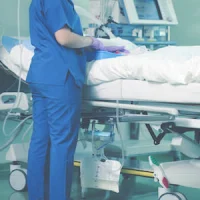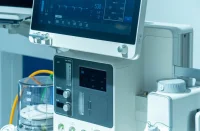Extubation failure refers to the inability to sustain spontaneous breathing after the removal of an artificial airway. The need for reintubation with 24 to 72 hours or up to seven days can lead to high morbidity, mortality and disability. The incidence of extubation failure in ICUs remains high (10-15%) and has two main causes: weaning failure and airway failure.
In this paper, the authors aim to update strategies for optimising extubation both before and after the procedure.
The FREE-REA study identified risk factors for extubation failure in critically ill patients and found that the absence of a strong cough, copious secretions, and a high SOFA score (≥ 8) were potential risk factors for airway failure and weaning failure.
A spontaneous breathing trial (SBT) is the first established method to predict weaning failure. The most common types of SBT are pressure support ventilation (PSV) and T-piece ventilation. A recent study found that a 30-minute PSV-SBT resulted in a higher rate of successful extubation compared to a 2-hour T-piece SBT without increasing reintubation rates. The higher success rate suggests that a less demanding SBT is more effective in determining a patient's ability to sustain breathing.
The use of high-flow nasal oxygen (HFNO) during T-piece SBT may improve outcomes by providing warm and humidified oxygen. A pilot study found that the rate of reintubation within seven days after extubation was 16% with T-piece and standard oxygen and 3.9% with T-piece and HFNO. It is important to give patients rest after an SBT by reconnecting them to the ventilator during a 1-hour rest.
Another important strategy is to conduct a careful haemodynamic assessment which is crucial before extubation. A recent study suggested that extubation while on low-dose vasopressors (≤0.1 μg/kg/min) can be safe and is associated with lower mortality and shorter ICU stay. On the other hand, extubation while on high-dose vasopressors (>0.1 μg/kg/min) is associated with a higher risk of reintubation compared to extubation after vasopressor discontinuation.
Using low-dose vasopressors during extubation may assist in achieving negative fluid balance and low filling pressures, thereby reducing the risk of overload after extubation and removal of positive-pressure ventilation. High-risk patients who failed SBT due to weaning pulmonary oedema often exhibit echocardiographic signs of left ventricular overload and excessive fluid balance. Using echocardiography to guide treatment has been shown to be successful in extubating these patients.
To anticipate airway failure before extubation, it is also important to assess cough expiratory peak flow and the amount of secretions to identify patients at risk of airway failure.
A recent meta-analysis showed that using preventive noninvasive ventilation (NIV) and HFNO reduced the reintubation rate in critically ill adults compared to conventional oxygen therapy. The greatest effect was seen in patients with a high baseline risk of reintubation.
Physiotherapy with cough augmentation techniques is important after extubation to effectively clear airways and remove respiratory secretions, which can be reduced by muscle weakness and airway dysfunction. Although evidence remains low, this type of therapy is crucial in this setting.
Some specific patients populations may be at a very high-risk of extubation failure. A recent meta-analysis showed that NIV and HFNO could reduce reintubation in critically ill patients, particularly patients with increased risk. NIV is a preferred therapeutic option for patients with COPD and heart failure and is superior to HFNO. In patients with obesity, NIV has been shown to be effective in preventing reintubation. In patients with brain injury, absence of cough, deglutition, gag reflex, and altered neurologic status are specific risk factors for extubation failure.
Source: Intensive Care Medicine
Image Credit: iStock
References:
De Jong A, Talmor D, Jaber S (2023) How to optimize extubation? Intensive Care Med.
Latest Articles
extubation, Spontaneous Breathing, extubation failure
Strategies to Optimise Extubation








